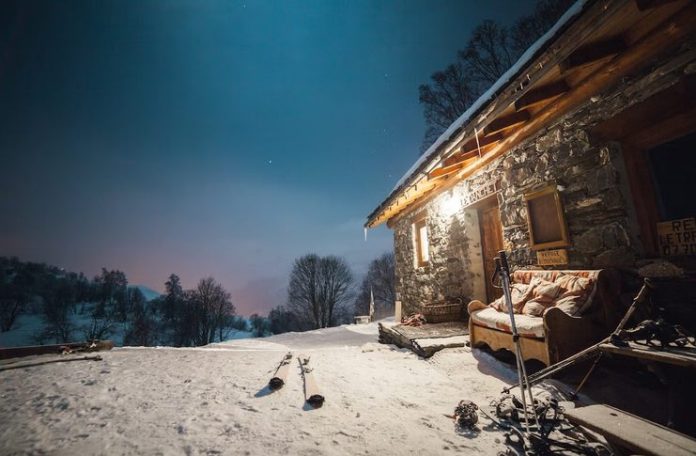
Even if the summer vacation season has over, you don’t have to wait an entire year before planning your next trip. Planning a winter holiday might be a welcome distraction as the days grow shorter and the temperature drops. Put on your warmest clothes and prepare for the following winter.
There’s nothing more thrilling than a winter getaway with the family. The newness of the weather, discovering the snowy environment, and going on adventures in the snow is something the whole family can enjoy and remember with fondness.
Use these tips to organize an unforgettable trip to any destination with breathtaking winter views.
1. Check Your Documentation
The first thing you need to do is make sure your identification documents aren’t due to expire. From starting the application procedure to receiving the passport in the mail, a typical passport application takes about two months.
However, some embassies and consulates may waive the application form. To apply, you should download a form from their website, take a passport photo online, send it in via mail or hand it over in person, and then wait for it to be processed.
2. Make Your Reservations in Advance
After choosing a location for your winter vacation and checking your documentation is in order, you must make your reservations as soon as possible. The winter season is the high season for ski resorts, so if you want to stay in one, you’ll need to act fast. When choosing where to stay, your trip’s objectives must be kept in mind.
Booking your tickets 80–95 days ahead of time, or around a holiday sale, is typically recommended for getting the most outstanding prices on a winter vacation. As an analogy, you might be able to take a trip with minimal or no transportation costs by looking into airline miles programs or credit card benefits.
3. Get Insurance
Health and travel insurance is necessary because of the high likelihood of accidents and the need for medical attention during the winter vacation season. Preparing for the worst when traveling is essential, as you never know what could happen, and leaving the safety and security of home can be very unsettling.
Insurance from a private company can help pay for unexpected medical bills and cover costs associated with staying elsewhere or changing flights. Also, ensure your ski insurance covers winter sports, and be aware of any restrictions on your chosen policy’s coverage.
4. Acquire a Foundational Knowledge of the Language
Traveling to a new area can be daunting, but with even a little knowledge of the local language, you can navigate with ease and enjoy every moment of your adventure. Knowing the local language can be pretty useful whether you’re trying to read signs or find instructions.
In addition, being able to order at a restaurant, check into a hotel, and—even better—a bargain for a lower price in a local market using phrases and words you know in the local language would significantly enhance your travel experience.
5. Schedule Activities in Advance
Outdoor exploration in the spur of the moment is exciting when the weather is warm, but when it’s chilly, it’s best to have a strategy. Pre-booking activities can save a lot of money, especially if you’re the type of traveler who would instead do something other than only using the spa during your vacation.
Most ski areas allow you to pre-book ski lessons and lift tickets at a discounted rate to save money. If snow is not a part of your winter getaway, consider taking a day excursion to the mountains or taking a bus tour to the nearest major city.
6. Pack Like a Pro
Packing can be a hassle when going on a trip, especially in the winter. When packing, the issue of what to bring arises every time. If you want to stay warm and dry, you need to pack for that, which means your sense of style may take a back seat for a few days.

It’s better to wear several thinner jumpers than one thick one. To protect your feet from the harsh elements, you should pack sturdy shoes for the duration of the journey. You should have an extra pair of boots or shoes that can be dressed up if you can do so.
7. Prepare Winter Travel Kit
Essentials for your trip in the winter should be included in your carry-on bag. During the winter, you should always have some medicine on hand to treat the frequent symptoms of being outside in the cold.
Emergency drugs, such as pain relievers and decongestants, should also be included. One of the most crucial winter travel safety guidelines, particularly when traveling with children, is always to bring all necessary medications.
8. Use Skincare and Moisturizers
When you go on vacation during the winter, you should bring moisturizing items with you so that your skin does not become overly dry. The only drawback of winter excursions is that the dry air and low temperatures may cause your skin and lips to get cracked.
In addition, it will be freezing where you are going, so it’s highly advisable to pack a lot of hand and body lotion to feel warm and comfortable throughout your vacation. Finally, do not assume you are immune to UV rays because of the season, as the reflection from snow and ice can increase the intensity of the rays.
9. Make Sure to Make an Exchange for the Local Currency
If you’re planning a trip abroad, you should research the local currency. Bringing the wrong money into a foreign country is useless. Determine whether or not your home currency will be worth more once you get to your destination by looking up the current exchange rate. Find out whether there are any nearby ATMs.
Additionally, if you need to rely on cash, you will likely incur ATM fees each time you take money out. It’s wise to bring more than one way to carry cash when you travel – cash, debit or credit cards, and prepaid travel money cards are all excellent options.
10. Have Plan B
A backup plan is a terrific method to guarantee that you’ll still have a good trip, even if it’s not what you initially anticipated if unforeseen setbacks emerge that can’t be immediately rectified with the extra time. When booking lodging, check the cancellation rules and the length of stay options.
It’s a good idea to map out not only a backup route but also any side trips or pauses you might want to make. Then, if you have to shorten your trip due to closures or time constraints, you’ll be prepared with an alternative route.
Wrapping Up
The coming winter season is a great time to get out and see the world, and I hope that this advice and tips will help you, whether your idea of exploration is a hike into the wilderness or a night by the fire. Leaving no stone unturned in your planning is vital if you want to make the most of your winter break.
However, it may sound a little intimidating, especially if this is your first time partaking in a winter adventure. But don’t let anxiety about taking your family on vacation prevent you from enjoying memorable trips together.









